
Aftercare, Impact and a Survivor-Led Movement

There is a style of Japanese art called kintsugi, in which an artist repairs broken pottery by using a lacquer mixed with gold. The point is not to hide the broken pieces, but to acknowledge them and see them as an important part of the history of the piece. No two works are alike; their cracks and seams are all unique, each with its own story to tell.
At IJM, we hold the hope and joy of rescue and restoration in tension with the realities of trauma, abuse and exploitation. And in doing this, we see the gold lines of restoration holding together the pieces of a painful history.
When our teams in South Asia worked with local authorities to help rescue Kashi* from a brothel, the woman who ran the brothel hid Kashi behind a curtain and told her we were there to put Kashi in prison.
But after years of working hard through counselling, trust-building and trauma-informed care, Kashi is flourishing in freedom. Not only is she enjoying her new life, she is a strong, empowered advocate for the protection and care of other girls who are vulnerable to abuse and exploitation.
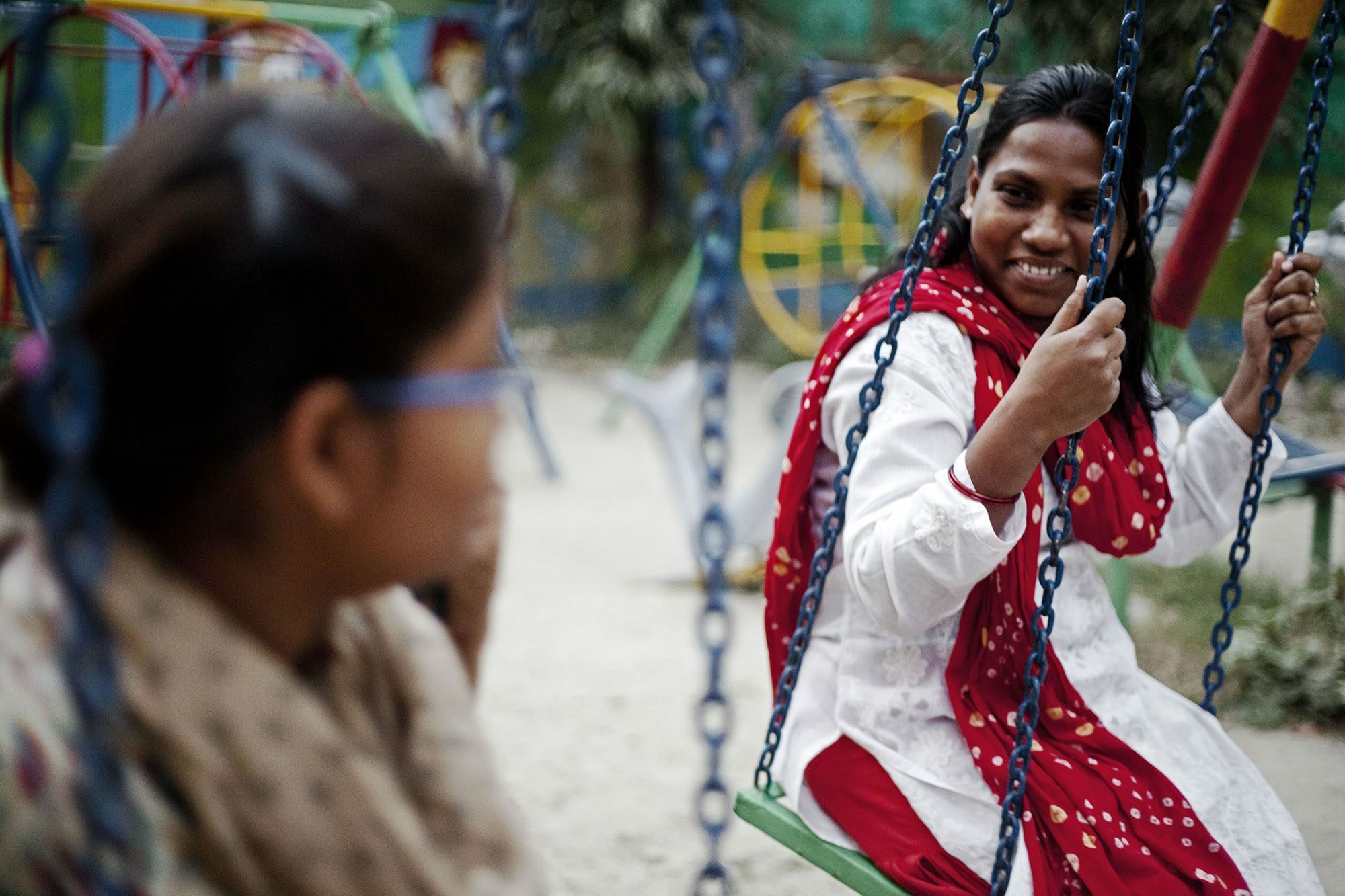
Kashi (obscured) swinging alongside her aftercare worker.
Kashi is a witness to the power of restoration. Her abusers wanted to break and diminish her, but she has filled those places of pain with hope.
While we work to ensure our teams and partners are providing the very best care to each survivor of violence we meet, we see incredible opportunities to build strong partnerships that will help expand and scale this world-class care across the globe. These partnerships are vital, because every survivor of violence deserves to have someone to walk alongside them on the path to restoration.
So this raises a crucial question: As we take our aftercare work to a global scale, how do we ensure these programs and approaches are survivor-centred and empowering, no matter where they are implemented?
Here are three key elements to IJM’s success as we have taken our aftercare work to scale around the world:
1. Implement standards and embrace customizable methodologies
It is a tremendous responsibility to care for a person who has endured mental, physical, sexual and emotional trauma. We believe that survivors of violence do not just deserve good care—they deserve the best care.
As we scale our work, we are applying and sharing what we have learned from our years of effectively serving survivors of violence. But true success in taking these learnings to scale only comes if everyone is aligned around the same set of ethical and minimum standards of care, no matter where they are in the world.
While we hold our programs to high standards, we understand that this work must be customized and uniquely applied for each culture in which we work, each casework type we take on, and each individual we meet. For this reason, it is crucial that we take proven methodologies and offerings and allow staff in the field to adapt and shape them in the way that works best in their particular context.
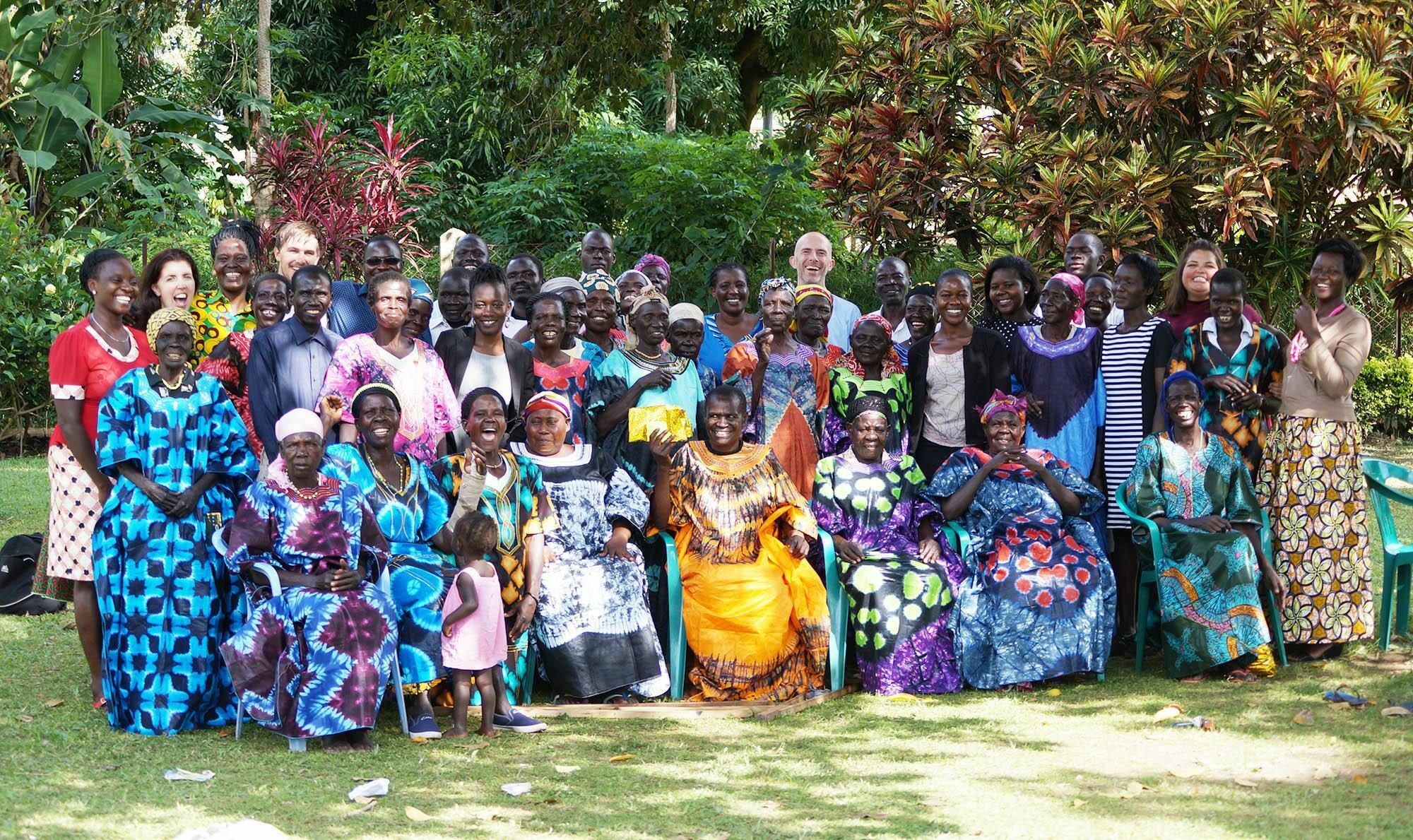
Survivors of land theft in Gulu attend an IJM trauma and resiliency training.
For example, trauma-informed care is an approach to interacting with survivors that recognizes the complex and nuanced impact of trauma. This awareness equips social services and justice systems to engage with survivors in a way that is sensitive and effectively supports their restoration. This approach impacts how our teams engage with a victim during the crisis care period; our teams are present during a rescue or after a victim reports abuse, explaining what is happening and letting survivors know they are safe. We assess a survivor’s immediate physical and emotional needs and help them navigate interactions with local police and justice system officials.
By coupling rigorous standards with flexible approaches, we can ensure teams taking our work to scale will be equipped with the tools they need to provide survivors with the same quality of attention and care, no matter where they are in the world.
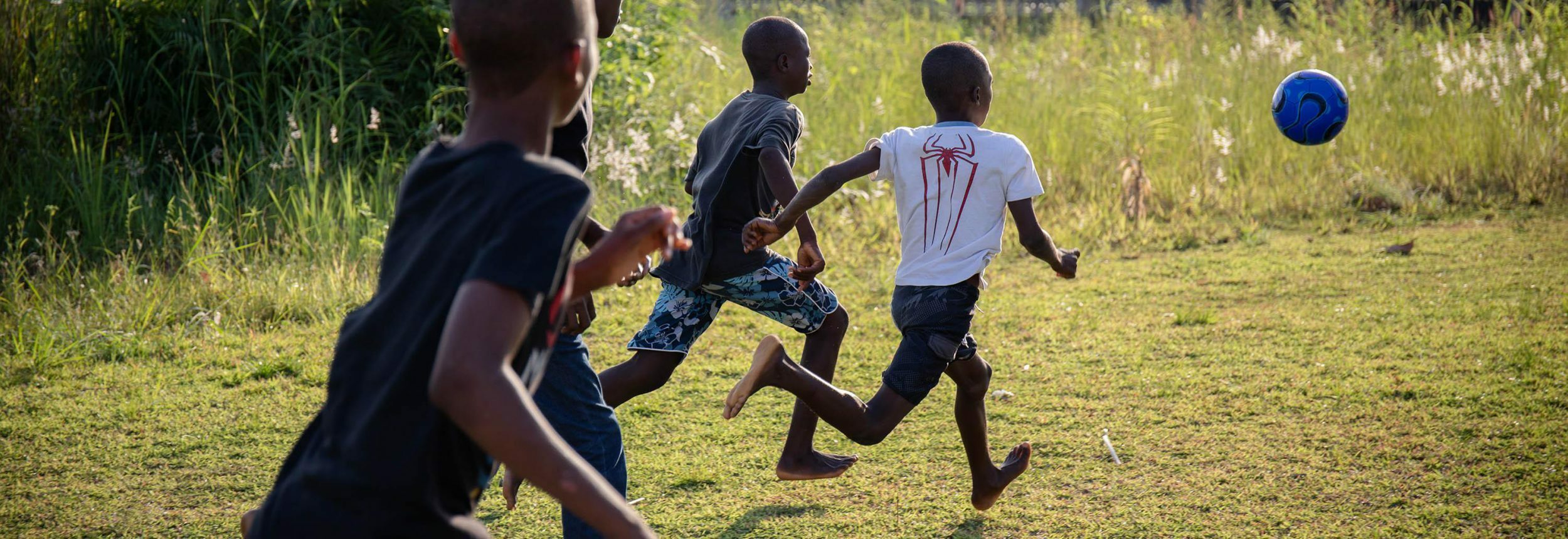
2. Measure Impact
In 2012, staff at an IJM program office in South Asia developed and piloted a measurement tool to help them answer an important question: How can we tell if our programs are really working to restore survivors of slavery and violence?
We were initially hesitant to move forward with the tool because we thought, “Surely there must be a measurement tool that already exists in this field.”
There wasn’t.
We knew that if we were serious about taking our aftercare approaches to scale around the world, we had to prove they were successful. This tool could help our teams do that, but we had to first prove the tool itself was valid, reliable and effective.
In 2015, we officially began the years-long journey to develop the Assessment of Survivor Outcomes (ASO) tool to measure progress of survivors rehabilitating from various forms of violence and exploitation. We found that the ASO tool not only measures impact across aftercare programming, but it also serves as a powerful case management tool.
At a high level, the ASO serves as an impact measurement tool to provide data on the effectiveness of aftercare programming by assessing survivor progress across entire casework types. By paying attention to any trends that arise from using this tool, service providers are equipping themselves to better meet the needs of survivors.
At the individual case tracking level, an aftercare service provider using the ASO tool can evaluate if a survivor is safe, able to access legal protection, social support, and education, as well as assess their mental and physical health. By using the tool, service providers can create a tailored plan for every survivor in their care.
Learn More: the ASO
This game-changing tool is free for aftercare service providers everywhere.
3. Elevate and Centre Survivor Voices
It is simply impossible to effectively scale the provision of protection and care of survivors if we're not paying attention to the voices and the needs of the people we are working to serve.
In my view, survivors are uniquely positioned to lead the movement to protect people from violence in their communities. Elevating and centring their voices, needs and experiences is crucial.
Survivors have uniquely powerful experiences and expertise to offer; they can share about the nature of the exploitation, the factors that enable it to thrive, the criminals who profit from it and the solutions that will stop it.
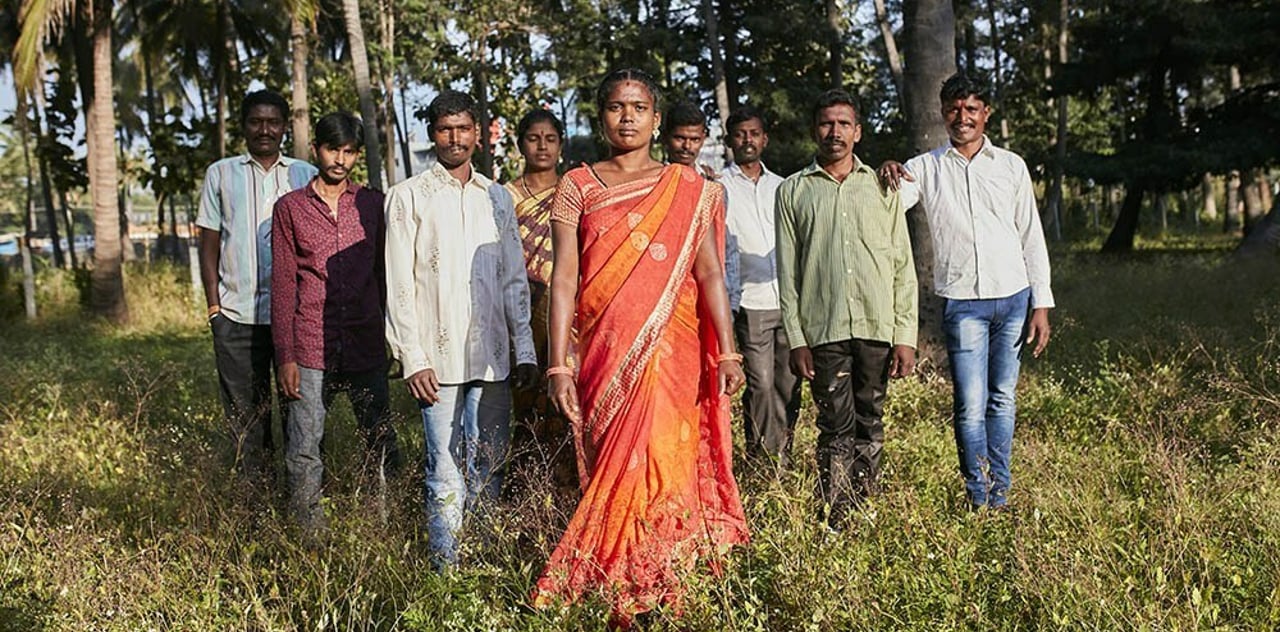
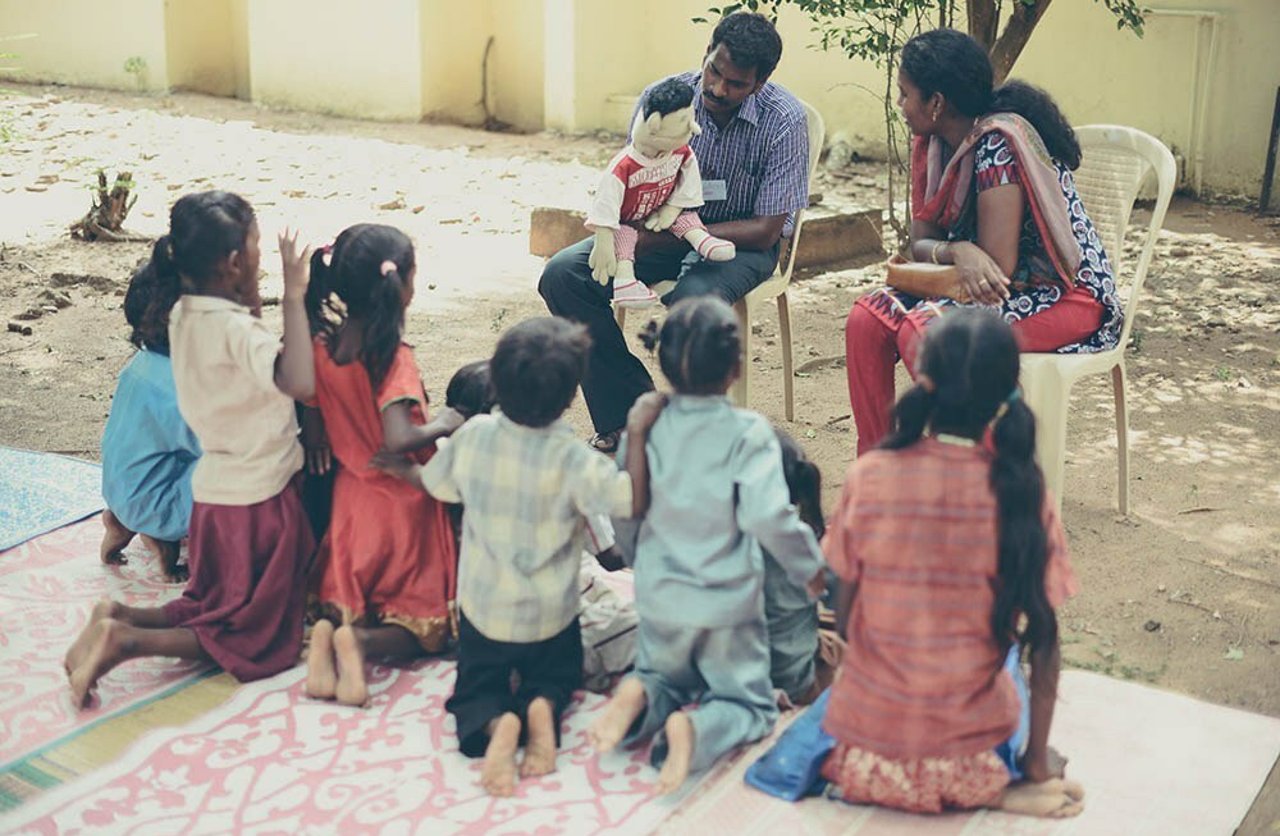

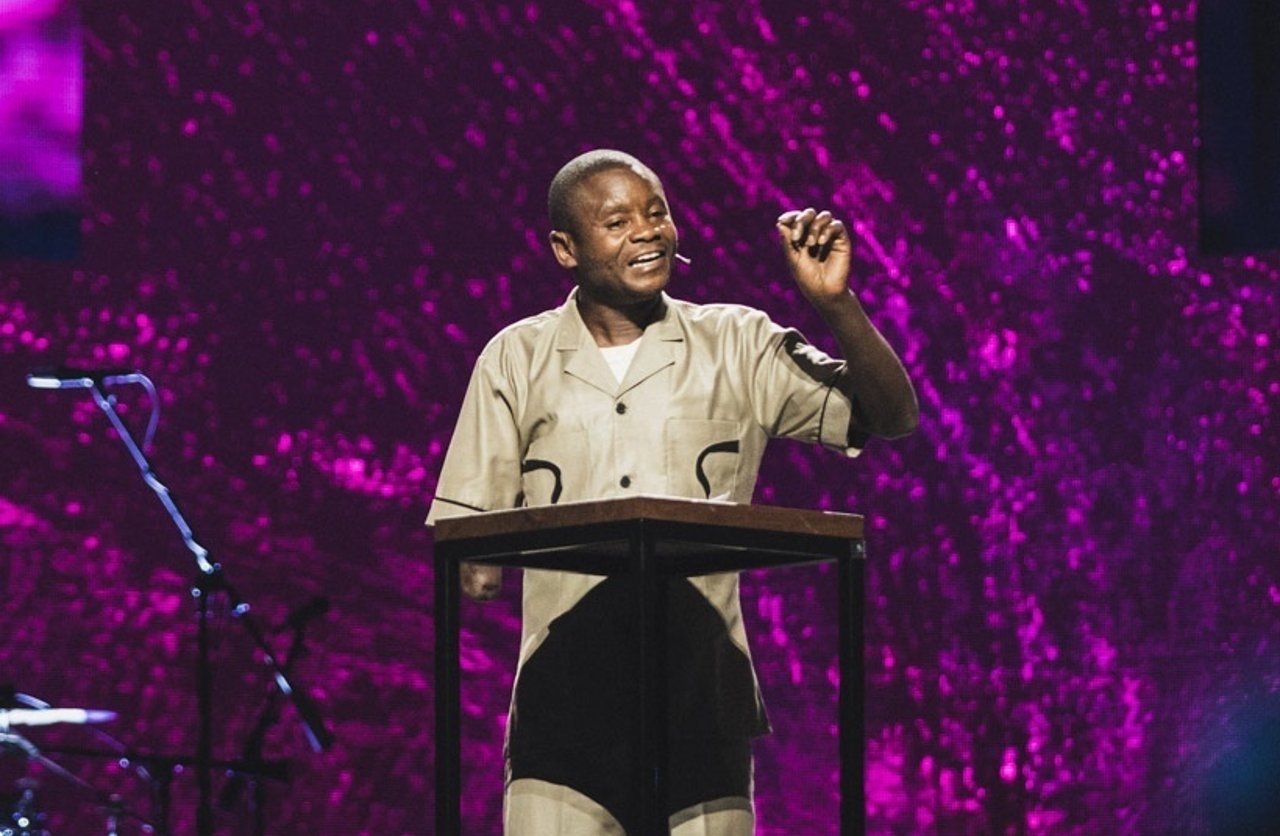
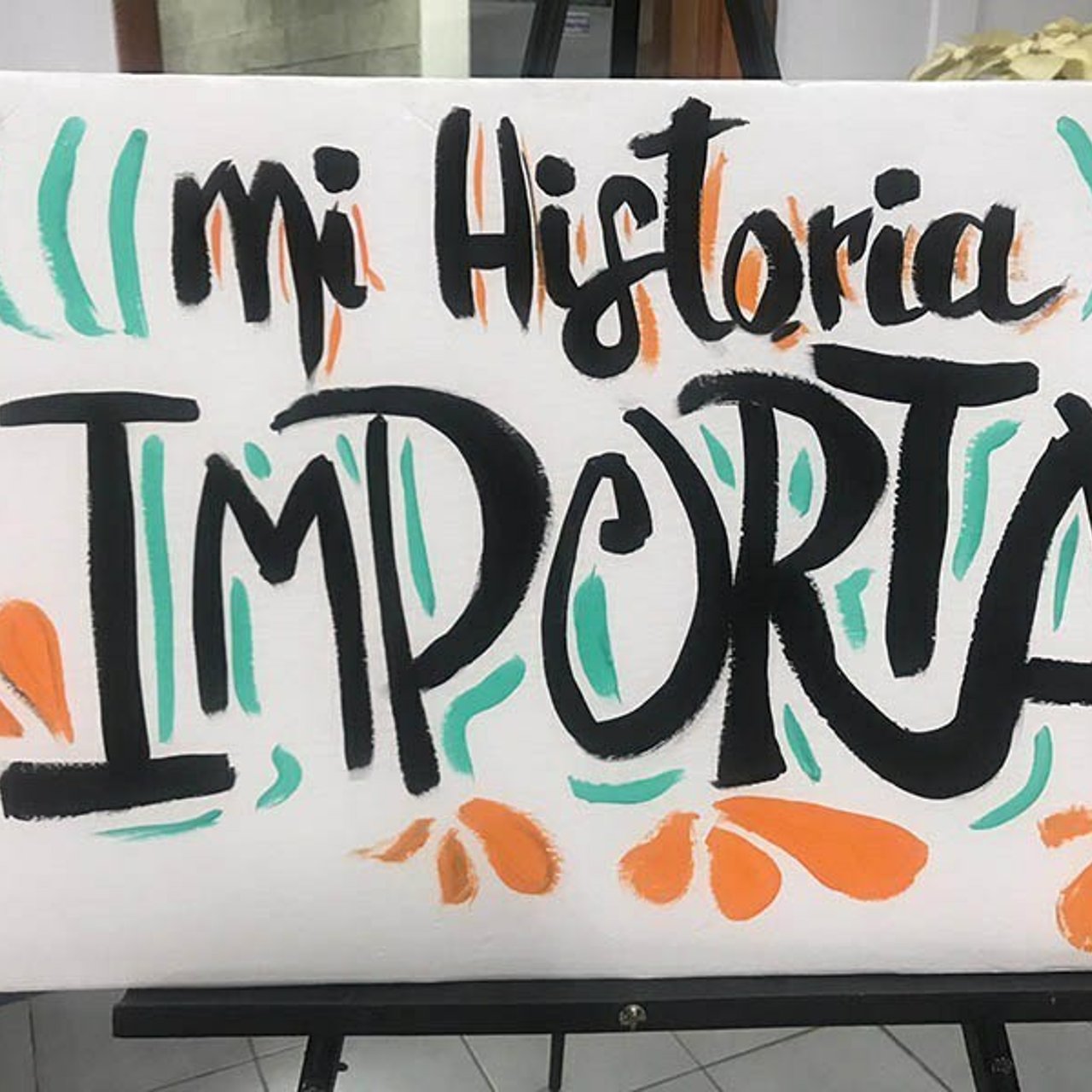
Seeking meaningful input from survivors is a trauma-informed approach that honours survivors’ diverse experiences. It also challenges our own biases, strengthens our programs, contributes to a sustainable response in the community and promotes accountability with both the affected populations and the donor community that is increasingly interested in survivors’ feedback.
Local networks of survivors have organically formed all around the world. Last year, IJM convened a number of these local survivor groups to form the Global Survivor Network (GSN).
The GSN is an international group of survivor leaders who desire and pursue safe communities through justice systems that protect vulnerable people. Every member of the GSN is a survivor of violence like slavery, violence against women and children or police abuse of power.
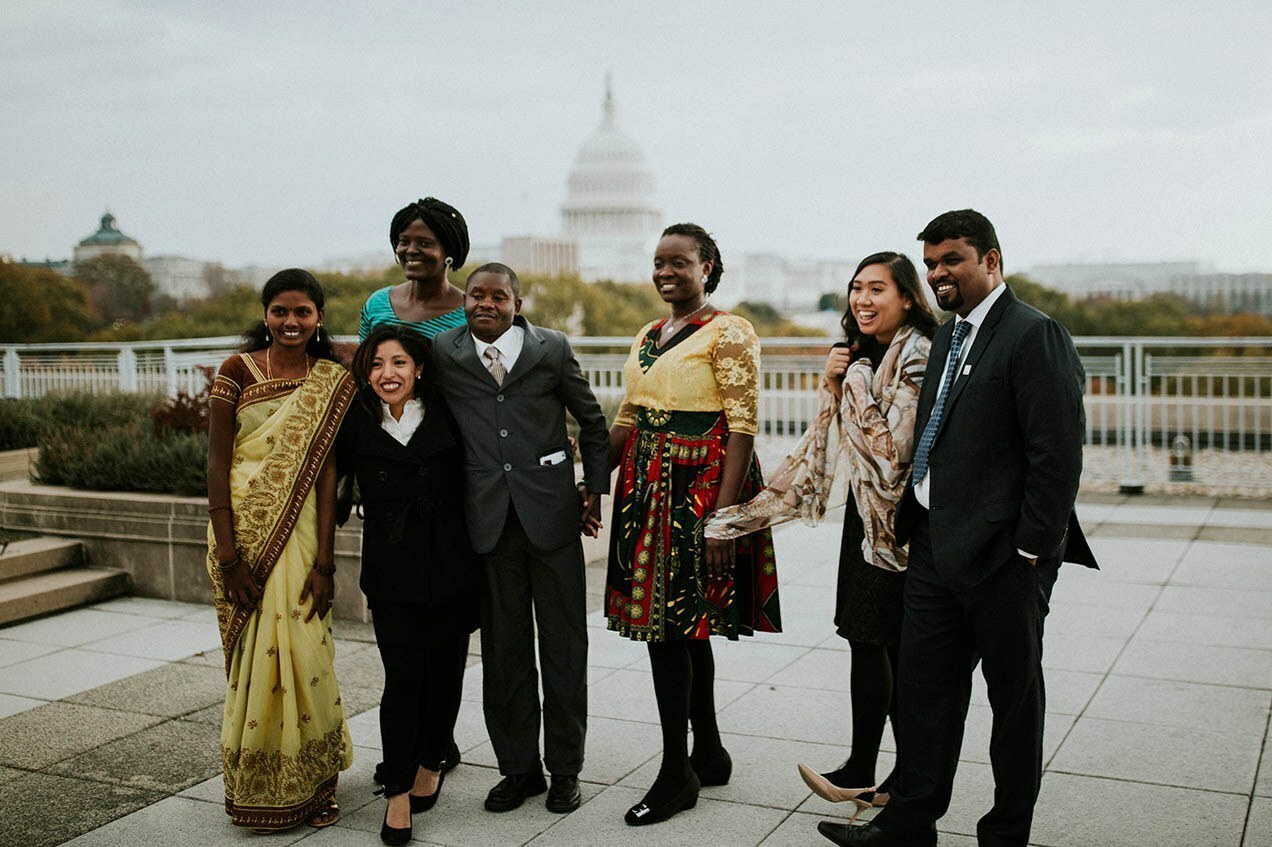
The Global Survivor Network Leadership Council
The spoken testimony of a person who has endured unspeakable violence is a powerful, beautiful thing. Through the Global Survivor Network, survivors of violence from around the world are advocating for change in their communities. They are leaders. And these leaders are mobilizing thousands of survivors and survivor groups to speak into local and global decision-making and policymaking that will help end violence against people who are poor.
If you’ve had a chance to read Kashi’s story, you’ll see why it is so powerful. Through her restoration journey, Kashi found the strength to stand up and tell her story—in her own words—and is a strong advocate for the protection of young, vulnerable girls in South Asia.
Kashi's Story
Kashi was only five when she was trafficked the first time.
I imagine hundreds, thousands and tens of thousands of people just like Kashi standing together and declaring, “No. This is not okay. We demand that something be done for those who are powerless.”
Who could deny a powerful testimony like that?

At the end of the day, we celebrate the survivors with whom and for whom we work. And much like the art of kintsugi, there are an untold number of survivors who have gone through a tremendous amount of trauma and pain who are bravely showing up as whole and empowered people, leading the fight to end slavery, trafficking and violence once and for all.
Similarly, as IJM continues to scale our work, our programs and approaches will continue to be used across the world. The ASO tool will be in the hands of more aftercare providers than ever before. And in the middle of everything, survivor voices will be the golden lacquer that holds it all together; a shining beacon of clarity that guides and informs this work every step of the way.
We’re committed to following their lead—until all are free.
About the Author
Dr. Michele Lee is the Global Vice President of Justice Solutions of IJM. She engages and collaborates with global IJM teams on internal knowledge sharing initiatives, thought leadership, global partnership development and decontextualized resource development in IJM’s program outcomes, standards, and competencies.
*A pseudonym.